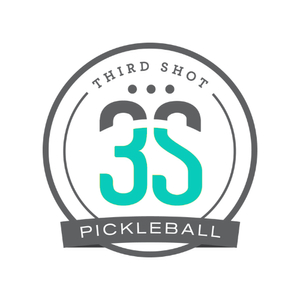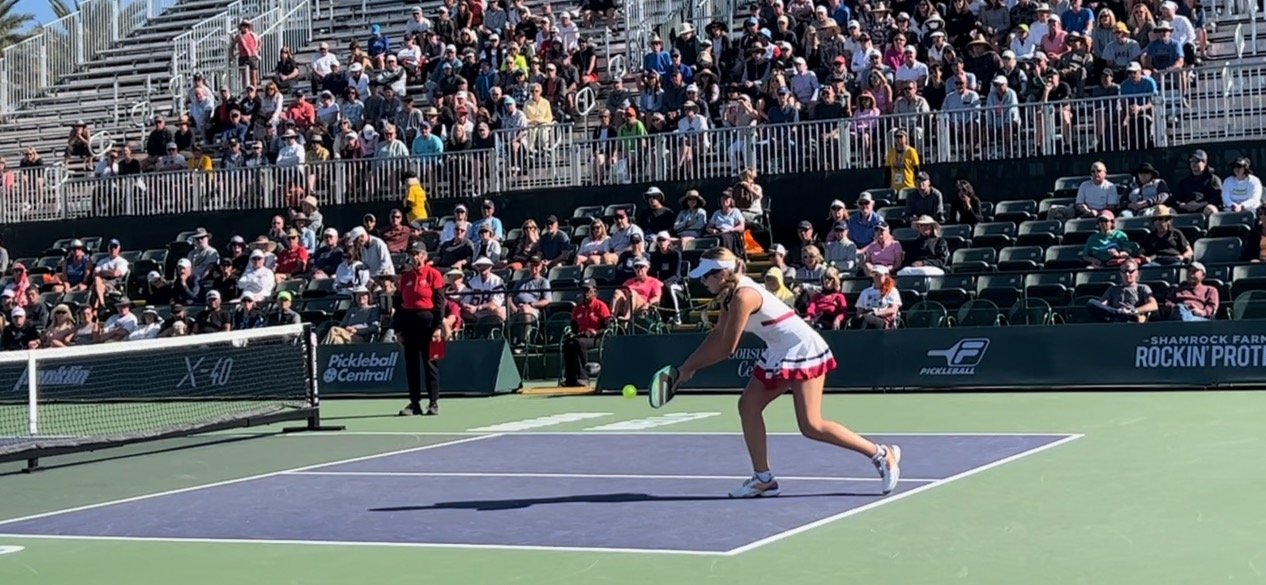If you have watched any high-quality pickleball lately, there's a pretty good chance you've seen players hit backhands with two hands. And I'm not just talking about driving the ball from the baseline or hitting a return of serve. I'm talking about when players are near the net and hitting dinks.
What's going on here? Obviously, players don't need to hit two-handed backhand dinks. After all, the nature of the dink is that it is a slow ball that you aren't hitting very far. Strength isn't an issue.
Michelle Esquivel preparing for a backhand dink near the kitchen.
It's important to understand how dinking has evolved. Not too long ago, dinks were considered mainly a neutralizing shot. The goal was less about causing trouble and more about avoiding it. Playing a low and slow ball was typically good enough to keep you out of harm's way. But things have changed.
Wesley Gabrielsen using two hands to play a drop near the kitchen. The second hand often provides stability.
Even when hitting dinks, strong players look to throw their opponents off balance. This could be by sending the ball in different directions, stealing reaction time, and, yes, hitting the ball with spin.
The real reason players are using two hands is that it's much easier to hit a topspin dink with two hands. The non-dominant hand does most of the work, brushing up the back of the ball. Essentially, you are hitting a forehand with your non-dominant side. And by creating the spin, players are making it harder for their opponents to control the ball.
Power players like Ana Leigh Waters are already very comfortable hitting with two hands from the back court. It is a fairly easy transition for them to do so from closer to the net.
One of the most exciting things about being involved with pickleball today is seeing how the game is evolving. Changes in tactics lead to changes in technique, and the two-handed backhand dink is a prime example of this. The bias toward more offensive-minded play means that advanced players want to do more than keep the ball in or out of harms way. They want to DO SOMETHING with it and the second hand on the paddle works toward this goal.






